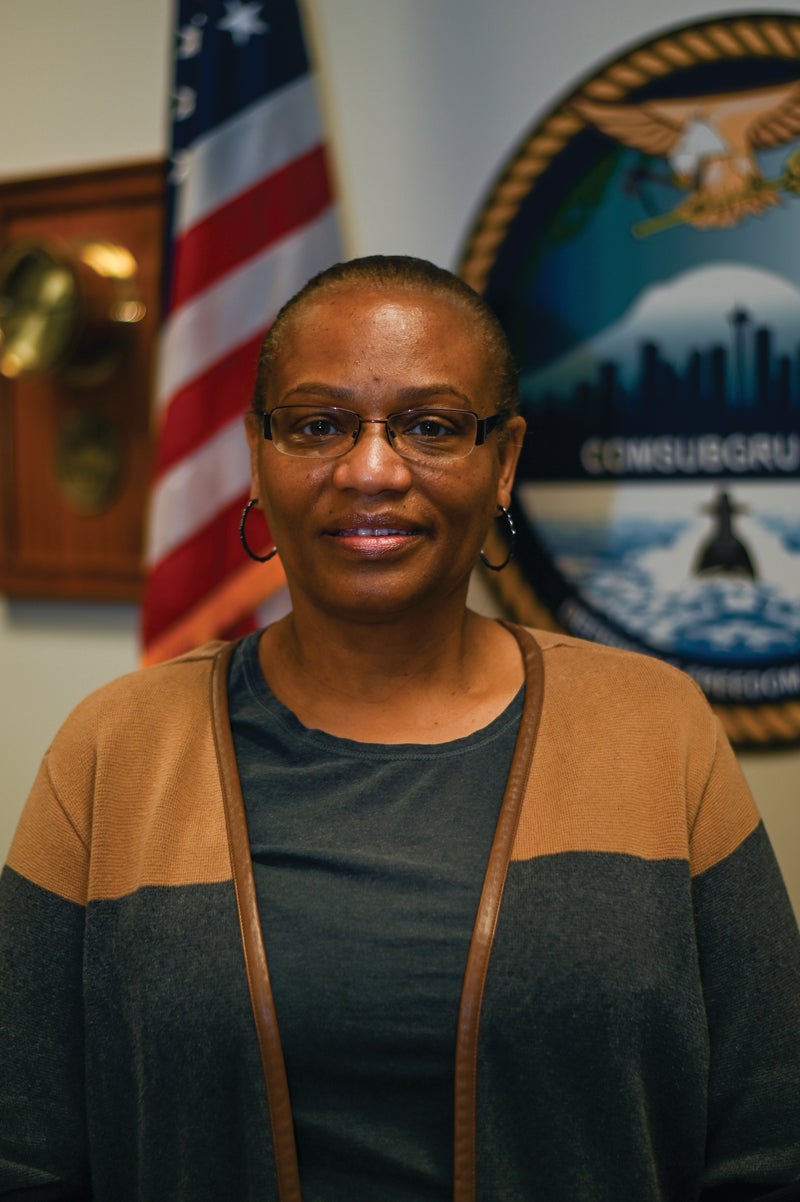Albemarle native works with U.S. Navy’s submarine force
Published 11:07 am Thursday, April 28, 2022
|
Getting your Trinity Audio player ready...
|
By Mass Communication Specialist 2nd Class Justin Whitley
Navy Office of Community Outreach
BANGOR, Wash. – An Albemarle native currently works onboard Naval Base Kitsap (NBK), homeport to west coast ballistic-missile and guided-missile submarines.
Petty Officer 1st Class (Ret.) Roglenna Anderson served for 16 years as a religious programs specialist and joined the Navy to continue a family tradition and for the opportunities provided.
“I joined the Navy to see the world,” said Anderson. “I come from a military family, and I also wanted to serve my country.”

Roglenna Anderson
Anderson attended Albemarle High School and graduated in 1985. Today, Anderson uses skills and values similar to those found in Albemarle to succeed in the Navy.
“Growing up in my hometown, I knew that in order to succeed you need to work hard,” said Anderson. “My time in the Navy has further instilled a strong work ethic. That work ethic has helped me succeed in my civilian job with the Navy after my active-duty time.”
These lessons have helped Anderson while working with Commander, Submarine Group 9.
Known as America’s “Apex Predators!,” the Navy’s submarine force operates a large fleet of technically-advanced vessels. These submarines are capable of conducting rapid defensive and offensive operations around the world, in furtherance of U.S. national security.
There are three basic types of submarines: fast-attack submarines (SSN), ballistic-missile submarines (SSBN) and guided-missile submarines (SSGN).
Fast-attack submarines are designed to hunt down and destroy enemy submarines and surface ships; strike targets ashore with cruise missiles; carry and deliver Navy SEALs; conduct intelligence, surveillance, and reconnaissance missions; and engage in mine warfare.
The Virginia-class SSN is the most advanced submarine in the world today. It combines stealth and payload capability to meet Combatant Commanders’ demands in this era of strategic competition.
The Navy’s ballistic-missile submarines, often referred to as “boomers,” serve as a strategic deterrent by providing an undetectable platform for submarine-launched ballistic missiles.
SSBNs are designed specifically for stealth, extended patrols and the precise delivery of missiles. The Columbia-class SSBN will be the largest, most capable and most advanced submarine produced by the U.S. — replacing the current Ohio-class ballistic-missile submarines to ensure continuous sea-based strategic deterrence into the 2080s.
Guided-missile submarines provide the Navy with unprecedented strike and special operation mission capabilities from a stealthy, clandestine platform. Each SSGN is capable of carrying 154 Tomahawk cruise missiles, plus a complement of heavyweight torpedoes to be fired through four torpedo tubes.
Strategic deterrence is the nation’s ultimate insurance program, according to Navy officials. As a member of the submarine force, Anderson is part of a rich 122-year history of the U.S. Navy’s most versatile weapons platform, capable of taking the fight to the enemy in the defense of America and its allies.
Serving in the Navy means Anderson is part of a team that is taking on new importance in America’s focus on rebuilding military readiness, strengthening alliances and reforming business practices in support of the National Defense Strategy.
With more than 90 percent of all trade traveling by sea, and 95 percent of the world’s international phone and internet traffic carried through underwater fiber optic, Navy officials continue to emphasize that the prosperity and security of the United States is directly linked to a strong and ready Navy.
A major component of that maritime security is homeported at Naval Submarine Base Bangor.
Strategic deterrence is the nation’s ultimate insurance program, and for decades Naval Submarine Base Bangor has been home to Ohio Class ballistic-missile submarines.
Beginning in 2028, the new Columbia Class ballistic-missile submarines will arrive and provide continuous sea-based strategic deterrence into the 2080s.
Anderson and the sailors they serve with have many opportunities to achieve accomplishments during their military service.
“I’m most proud of the times I was able to mentor junior sailors in both their personal and professional lives,” said Anderson.
As Anderson and other sailors continue to train and perform the missions they are tasked with, they take pride in serving their country in the United States Navy.
“Serving in the Navy meant the world to me,” added Anderson. “It gave me the structure and discipline I needed to make me who I am today. Also, being able to serve and protect the United States and my family was truly an honor.”



